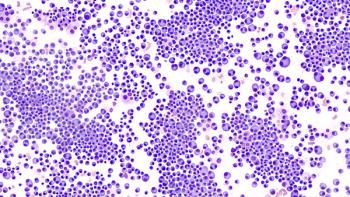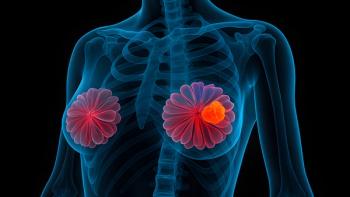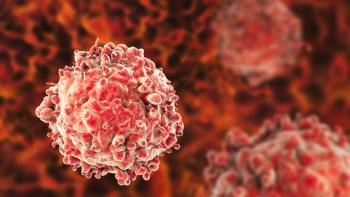
FDA Approves Mitomycin Intravesical Solution in Low-Grade NMIBC
UGN-102 has received FDA approval for use in patients with low-grade intermediate-risk non-muscle-invasive bladder cancer.
The FDA has approved mitomycin intravesical solution (UGN-102) for the treatment of adult patients with recurrent low-grade intermediate-risk non–muscle-invasive bladder cancer (LG-IR-NMIBC).1
The efficacy of UGN-102 was evaluated in the phase 3, single-arm ENVISION trial (NCT05243550), observing 240 adult patients, 223 of whom were evaluable for response, with low-grade NMIBC recurring following previous transurethral resection of bladder tumor (TURBT).
The trial’s primary end point was complete response (CR), defined as no disease in the bladder as determined by cystoscopy and urine cytology along with a biopsy if necessary, at 3 months, and duration of response (DOR).
UGN-102 yielded a 78% (95% CI, 72%-83%) CR rate. Likewise, the range of DOR was 0 to 25+ months, with 79% of patients remaining in response for at least 12 months.
Patients enrolled in ENVISION were required to meet 1 or 2 of the following criteria: have multiple tumors, have a solitary tumor greater than 3 cm, or have recurrence within 1 year. Participants were administered 75 mg of UGN-102 once weekly for 6 weeks in a row. Tumor status was assessed every 3 months via cystoscopy, urine cytology, and biopsy when needed.
Safety Data
The most commonly reported adverse events (AEs) including laboratory abnormalities, observed in at least 10% of patients, were increased creatinine, hyperkalemia, dysuria, decreased hemoglobin, increased aspartate aminotransferase, increased alanine aminotransferase, increased eosinophils, lymphocytopenia, urinary tract infection, neutropenia, and hematuria.
Serious AEs were reported in 12% of patients, including 0.8% of patients experiencing urinary retention and 0.4% of patients having urethral stenosis. One patient died due to cardiac failure.
Background on UGN-102
A prespecified subgroup analysis of ATLAS showed that patients with newly diagnosed LG-IR-NMIBC who received UGN-102 with or without TURBT (n = 85) saw a 77.4% 15-month DFS rate. Patients with recurrent disease (n = 57) achieved a 15-month DFS rate of 63.2%.
Furthermore, patients who achieved a complete response (CR) in the newly diagnosed (n = 50) and recurrent (n = 42) subgroups achieved respective 12-month DOR rates of 87.5% and 69.1%.
Reference
- FDA approves mitomycin intravesical solution for recurrent low-grade intermediate-risk non-muscle invasive bladder cancer. FDA. News release. June 12, 2025. Accessed June 12, 2025. https://www.fda.gov/drugs/resources-information-approved-drugs/fda-approves-mitomycin-intravesical-solution-recurrent-low-grade-intermediate-risk-non-muscle
- Prasad SM, Huang WC, Shore ND, et al. Response to primary chemoablation with UGN-102 in patients with new or recurrent LG IR NMIBC: post-hoc analysis of the ATLAS trial. J Urol. Published online May 1, 2024. doi:10.1097/01.JU.0001008848.77629.6f.09
Newsletter
Knowledge is power. Don’t miss the most recent breakthroughs in cancer care.

















































































